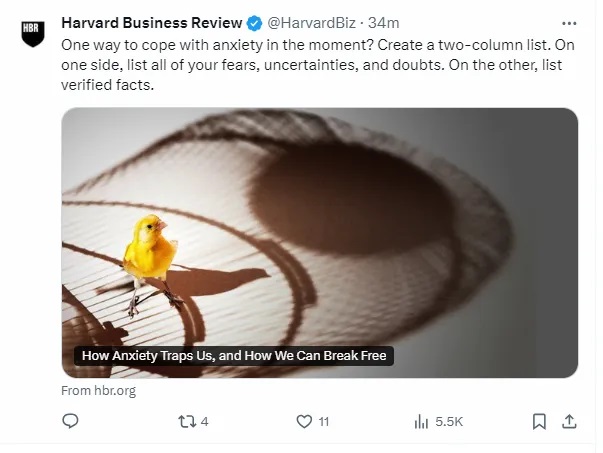Summary
- Social Media Rewards Speed, Not Depth
Algorithms prioritize quick, attention-grabbing content like memes and short posts, making it harder for long-form, meaningful content to gain traction. - Emotional Storytelling is Essential
To compete on social media, even serious content needs an emotional pull. Stories, stakes, and visuals that resonate personally can make your work more relatable and shareable. - Adapt Without Compromising Quality
Creators can win by breaking down complex topics into digestible pieces, using visuals and hooks to draw attention, and consistently engaging their audience to build long-term loyalty.
It rewards bite-sized posts and quick laughs over in-depth work. But understanding this dynamic can help us adapt and turn it to our advantage.
Table of Contents
- Why Social Media and Content Creation Clash
- The Struggles of Long-Form Content
- Why Shitposting Thrives
- How Creators Can Adapt
- Seeing Social Media Differently
- The Emotional Pull Factor
- Examples of Emotional Pull in Action
- Conclusion
Why Social Media and Content Creation Clash
Social media platforms are built to keep users scrolling. Their business model relies on engagement — likes, shares, comments, and clicks. The more people interact, the more ads they see, and the more money platforms make.For content creators, the problem is clear: meaningful work usually takes more time and focus than social media users are willing to give during their daily scroll. The algorithms don’t reward thoughtful pieces because they’re chasing the next big click, not depth.
This is why a meme, a snarky tweet, or even a random shitpost often outperforms an article that took days to craft.
The Struggles of Long-Form Content
Let’s break it down. Why is it so hard for long-form content to make waves on social media?- Short Attention Spans
Social media is built for instant gratification. People spend seconds on a post before moving on. A detailed article or video that takes real mental investment doesn’t fit this mold. - Algorithms Aren’t Your Friend
Platforms push posts that generate fast reactions. A quick laugh or a strong emotional response — like outrage — will always win over nuanced ideas in the algorithm’s eyes. - Crowded Feeds
There’s a flood of content on every platform. Without a strong hook, even great work gets lost in the noise.
Why Shitposting Thrives
Let’s face it: shitposting works. It’s cheap, it’s fast, and it grabs attention in a way that long-form content struggles to do. A random meme or joke can spark instant reactions and rack up shares, simply because it’s easy to digest and emotionally triggering.Shitposting wins because:
- It’s relatable. People like things they can quickly connect with.
- It’s lightweight. No one has to think too hard to understand it.
- It’s shareable. People spread it without a second thought.
- It’s frustrating, especially when you’ve invested time and energy into creating something meaningful. But instead of resenting this reality, we need to figure out how to make it work for us.
Example
This post gives zero proof, zero info, and got 55k impressions.

And an in-depth article by Harvard Business Review got only 5.5K impressions

How Creators Can Adapt
The solution isn’t to abandon meaningful content. It’s to package it in ways that fit how social media works. Here are some strategies to bridge the gap:- Grab Attention Early
Start your posts with something irresistible — an intriguing question, a bold statement, or an eye-catching image. Hook people right away and give them a reason to stay. - Make It Visual
Social media loves visuals. Use charts, graphics, or short clips to convey key points from your work. These can act as teasers that encourage people to dive into the full piece. - Break It Up
If your article is too dense for one post, slice it into smaller, digestible pieces. Share these over time to keep the conversation going while driving traffic to your main content. - Engage Directly
Don’t just post and walk away. Start conversations in the comments. Respond to people’s thoughts. Engagement isn’t just about algorithms — it builds trust with your audience. - Play the Long Game
Social media rewards consistency. Keep showing up with your voice and your message. Over time, you’ll build a loyal audience that values what you have to say. - Leverage Niche Platforms
Platforms like LinkedIn or Medium often favor deeper, more thoughtful content. Use them as a complement to your shorter, snappier posts elsewhere. - Combine Strategies
There’s nothing wrong with mixing styles. Pair lighthearted posts with your serious work. Use humor to grab attention and then direct people toward your in-depth content.
Seeing Social Media Differently
Instead of seeing social media as the enemy, think of it as a tool. Yes, it rewards quick hits, but it also gives creators the chance to reach huge audiences — if we play the game wisely. The trick is to adapt without losing your voice.Social media isn’t going to stop favoring shitposts and memes anytime soon. But by understanding how it works, you can use its strengths to amplify your reach. Meet the audience where they are, and lead them where you want them to go.
The Emotional Pull Factor
Social media thrives on emotions. People share and engage with content that makes them feel something — whether it’s joy, anger, nostalgia, or inspiration. This isn’t just true for memes and viral videos; even serious, in-depth content can find its place on social media if it connects emotionally with the audience.For creators, weaving emotional storytelling into your work is essential. Data and logic are important, but without an emotional hook, your content risks being overlooked. When you frame your message in a way that resonates personally, it becomes not just informative but also relatable and memorable.
Why Emotional Connection Matters
- It Creates Immediate Engagement: Emotions prompt quick reactions — likes, shares, and comments — all of which boost your content’s visibility in the algorithm.
- It Builds Trust and Loyalty: An emotional connection fosters a deeper bond with your audience, making them more likely to return for future content.
- It Encourages Sharing: People share content that reflects their own values, beliefs, or experiences, especially when it sparks an emotional reaction.
How to Add Emotional Storytelling to Serious Content
Even the most technical or detailed subjects can incorporate emotional elements. The key is to find the human story behind the data or insights.Examples of Emotional Pull in Action
- A Personal Anecdote to Illustrate a Larger Point
If you’re writing about financial resilience, open with a brief story of someone who overcame a financial crisis.
Example: “When Sarah lost her job during the pandemic, she turned to budgeting apps and gig work to stay afloat. Her journey taught her hard lessons about savings and adaptability — lessons we can all learn from.” - Highlight the Stakes
Frame your topic in terms of what’s at risk to make it more compelling.
Example: Instead of presenting dry data on climate change, you might write, “For a farmer in Kenya, a two-degree temperature rise isn’t just a statistic — it’s the difference between feeding their family or losing everything.” - Evoke Curiosity and Relatability
Use scenarios or questions that spark curiosity and make the audience see themselves in your content.
Example: “Have you ever felt like you were doing everything right, only to feel stuck in your career? You’re not alone — here’s what we found in our research.” - Use Visuals to Trigger Emotion
Pair your content with images or videos that evoke a feeling. A powerful photo can do as much for emotional connection as the words themselves.
Example: An article about food insecurity could start with a close-up of a child holding an empty plate. - Incorporate Aspirational Messages
Focus on the positive outcomes of your content and inspire action.
Example: “Imagine waking up every day feeling confident about your financial future. Here’s how you can make that a reality.”
Conclusion
The tension between content creation and social media isn’t going away. But it doesn’t have to stop you from sharing meaningful work. By using smart strategies and embracing the quirks of the platforms, you can get your message out there without compromising on quality.Think of social media as the doorway, not the destination. Your job is to catch people’s attention and invite them to stay for something deeper. That’s how you turn this difficult marriage into a powerful partnership.

I started using the new Articles features on X intensively and I want to share my first thoughts, why or when you should start using it, the advantages as well as the disadvantages and some tips for X and Elon Musk to make it better. Conclusion at the end of the article. Spoiler alert, I like X Articles

With a B2B Sales Pipeline every stage counts! From lead gen to post-sale follow-ups, we're breaking down each crucial step. Stay ahead with our in-depth guide, complete with examples!

User-generated content (UGC) has become a cornerstone of modern marketing strategies, particularly for businesses looking to leverage the authenticity and creativity of their customer base. For startups and entrepreneurs, UGC not only provides a cost-effective form of content but also boosts engagement and brand loyalty. Here are some strategies businesses can use to incentivize customers to create and share UGC:

The key to a startup's social media triumph lies in harmonizing organic engagement with paid advertising. The challenge is to leverage both for their unique advantages while mitigating their downsides. For startups to thrive, it's not just about choosing one over the other; it's about integrating both to create a cohesive, dynamic social media presence.Continue exploring these insights and learn how to master the art of social media

